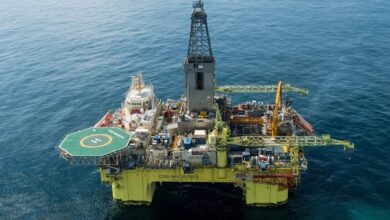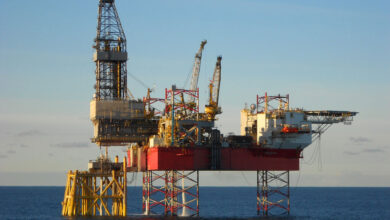Wired pipe telemetry provides step-change improvements
Wired pipe telemetry systems, however, can provide a bandwidth of up to 57,600 bits/sec and can transmit data from downhole tools to surface at high update rates. Real-time transmission of information is not affected by depth, formation resistivity, fluid properties or flow rates.
The company chose to run the mud pulse telemetry system as a backup during the project, though the wired pipe telemetry system ended up being fully operational for 87% of the time at OEHI. And most of the downtime was actually due to the learning curve associated with pipe handling and installation, Mr McCartney said.
The first two wells drilled with the wired pipe telemetry system at OEHI achieved an average 10% time savings, which helped to reduce drilling costs significantly in this onshore environment.
Memory-quality data were received on surface from the real-time data transmissions. The high data rate also allowed most downhole measurements to be delivered with full digital resolution – improving the clarity of downhole conditions and the wellbore.
Instantaneous peaks in shock and vibration measurements could be detected in real time, allowing drilling parameters to be optimized. Mr McCartney provided example images illustrating the clarity of data transmitted through the wired pipe telemetry system.
Pressure management also benefitted from the system because data could be acquired when the pumps are off. Example images were shown to illustrate effects of mud temperature on the viscosity and density of the drilling fluid and resulting change to ECD.
Because of the system’s ability to transmit large data sets in real time while drilling, the operator was able to get two additional resistivity curves, an eight-sector gamma image, plus all the drilling dynamics and pressure management information simultaneously at five-second intervals.
In one case, the system allowed the operator to drill 4,324 ft in a 24-hour period while staying within the productive zone.
This project also marked the first time that a reservoir navigation operation used wire pipe with foam as the drilling fluid. The wire pipe system mitigated typical issues encountered with mud pulse telemetry in foam drilling applications, such as the lack of continuous data flow due to the lack of uniform density and flow rate of the fluid.
Mr McCartney noted that while the technology is still in an early implementation stage, the OEHI project was able to demonstrate its advantages and potential. “We are only scratching the surface of the technology,” he said.
On the last day of the Drilling Conference, NOV IntelliServ was scheduled to make a presentation, “Along String Pressure and Temperature Measurements in Real Time: Early Field Use and Resultant Value,” discussing an even further step that’s been taken with the wired pipe telemetry system. Look for a full report on this presentation in the March/April 2009 issue of Drilling Contractor, available soon.
SPE/IADC 119570, by Scott Allen and Chris McCartney, Occidental Petroleum; Maximo Hernandez and Michael Reeves, NOV IntelliServ; Azaad Baksh and Danial MacFarlane, Baker Hughes, was presented at the SPE/IADC Drilling Conference, 17-19 March, Amsterdam.




